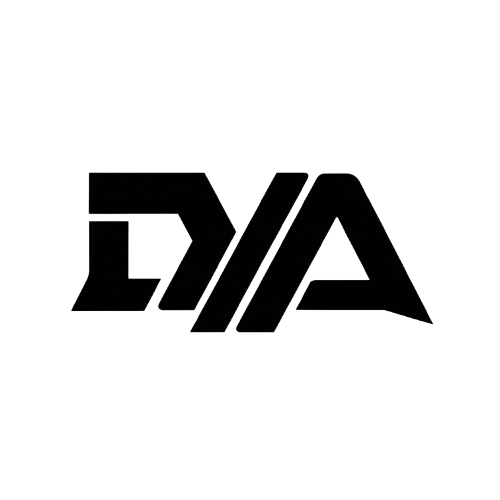Understanding Telegram, X, Discord, and More
Crypto doesn’t move like traditional markets — it moves through memes, narratives, and social momentum. While the tech lives on-chain, the culture, hype, and coordination live off-chain.

If you want to track real projects, avoid scams, and catch trends before they go mainstream, you need to understand where crypto communities live and how they work.
In this article, we’ll break down:
- Why communities matter in crypto
- Where most projects build their audience (Telegram, X, etc.)
- How to tell if a project has real traction or fake hype
- Tools and tips for managing your involvement
- Where to go next
🧠 1. Why Communities Are Everything in Web3
Traditional companies rely on ads and shareholders.
Crypto projects rely on communities to drive:
- Hype and narrative
- Liquidity and trading activity
- Governance and protocol upgrades
- Meme virality and cultural value
- Technical contribution and dev updates
A strong community can make a basic token moon, while a weak one can tank even the best tech.
🚨 Communities Also = Red Flags
The community isn’t just a hype machine — it’s where you’ll spot early signs of:
- Rugs or dev abandonment
- Token unlocks or stealth minting
- Internal arguments or DAO takeovers
- Over-promising founders
- Manipulated sentiment (bots, paid shills)
Knowing how to read community energy is like reading the room in a trade.
📣 2. The Most Important Platforms for Crypto Communities
🐦 X (formerly Twitter)
X is the public face of every project. Founders, devs, whales, influencers, and VCs all post here. It’s where narratives form, memes spread, and major news drops.
Look for:
- Regular updates from core team
- Quote tweets from trusted accounts
- Follower growth and engagement rate
- Spaces (audio chats) for big launches or debates
👉 Create your account: https://twitter.com
💬 Telegram
Telegram is the ground floor of most crypto projects — especially on Solana, BNB, and Ethereum.
You’ll find:
- Announcements
- Community Q&As
- Early token alpha
- Dev messages before official posts
- Immediate feedback loops after launches
Most Solana memecoins live entirely on Telegram.
👉 Create your account: https://telegram.org
Crypto Communities (Continued)
🗣️ 3. Other Platforms You Need to Know
While X and Telegram dominate most of crypto, there are other platforms that play key roles depending on the project’s structure, audience, and ecosystem.
🧵 Discord
Discord is where technical communities, DAOs, and NFT projects tend to live. Unlike Telegram, it’s more structured with channels like:
- #announcements
- #governance
- #support
- #suggestions
- #meme-lounge
- #dev-updates
You’ll find Discord in:
- NFT mints (WL announcements, sneak peeks, team chats)
- DAOs and governance-based projects
- L2 protocols, DeFi tools, and dApp communities
Pros: Organized, great for long-form conversations
Cons: Overwhelming, noisy, hard to track if not curated
Reddit was big in early crypto days and still hosts longer-form discussion and “normie” onboarding. Subreddits like:
- r/CryptoCurrency
- r/Solana
- r/Ethereum
- r/CryptoMoonShots (degenerate pick shills)
Many people turn to Reddit for:
- First-time user questions
- Deep dive writeups
- Scam/rug callouts
- Hidden gems from community sentiment
While not real-time, it’s great for sentiment analysis and timeless posts.
🌐 Decentralized Social (Farcaster, Lens, etc.)
New social platforms are emerging that use blockchain for:
- Identity
- Content ownership
- Interoperability
- Censorship resistance
Two notable ones:
- Farcaster – Social protocol with verified wallets, fast-growing Solana & Ethereum crowd
- Lens Protocol – Polygon-based social graph
Still early, but these could become X alternatives in a truly on-chain world.
🧩 Project-Specific Websites & Forums
Some OG projects (Bitcoin, Monero, Ethereum) maintain their own forums or GitHub discussions.
Watch for:
- Proposal discussions
- Upgrade specs
- Ecosystem grants
- Community voting threads
These are less active for memecoins but critical for infrastructure protocols.
Crypto Communities (Final Part)
🧠 4. How to Spot Real vs Fake Communities
Not all communities are created equal. Some are organic, engaged, and dev-connected — others are bot-infested echo chambers built to farm liquidity or exit liquidity.
Here’s how to tell the difference:
🚩 Red Flags of Fake Communities
- 🚫 90% of posts are “Wen marketing?” or “Wen CEX listing?”
- 🤖 Obvious bot messages: repeated emojis, single-word spam, instant reply walls
- 👻 Anonymous mods with no clear dev contact
- 🧻 Admins banning users for asking basic questions
- 🔕 Quiet X accounts but a “hype-filled” Telegram
If it feels forced, fake, or fragile — it probably is.
✅ Green Flags of Legit Communities
- 🔁 Devs post updates directly
- 💬 Real conversation happening in threads
- 🎙️ Twitter Spaces or AMAs with actual roadmap discussion
- 🌊 Meme culture that emerges organically
- 🧠 Users helping each other without being asked
- 📈 Community activity grows in sync with the product, not just the price
📊 Bonus: Use These Tools to Analyze Community Traction

If you want to go deeper, use these to audit traction and transparency:
- Birdeye – See token holders, volume, and contract age (Solana)
- DexTools – View trending tokens and wallet trades (Ethereum, BSC)
- X/Twitter – Use search operators like
min_faves:10to filter real posts - Telegram Group Trackers – For public Telegram growth metrics
- Discord Audit Tools – To see server member history and engagement levels
🔗 5. Where to Go Next
Crypto is a social movement powered by code. Understanding the off-chain conversation is just as important as understanding the on-chain data.
Here’s how to plug into real communities and sharpen your instincts.
- 🔗 Learn About Blockchain →
- 🛠️ Use Token Scanners →
- 💼 Choose Your Wallet →
- 📘 Back to Learn Crypto Hub →
💬 Final Word
In crypto, the community is the product.
Follow the devs. Join the chats. Lurk the memes. Ask the questions. The more in tune you are with real energy, the better your decisions will be — whether you’re trading, building, or just learning.










